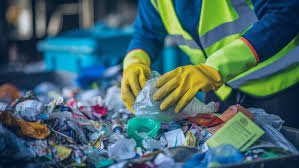Dorsten vs Fresno Pollution Coparament: A Comprehensive Analysis
Introduction
In an era where environmental concerns are at the forefront of global discussions, understanding pollution levels in different cities has become increasingly vital. Today, we dive into a comparative analysis of pollution in Dorsten vs Fresno Pollution Coparament, two cities located in distinct geographical and cultural contexts. While Dorsten is nestled in Germany, Fresno is situated in California, USA. Despite their differences, both cities face unique challenges regarding air quality, water pollution, and waste management. This blog aims to explore these aspects in detail, providing a well-rounded view of how pollution impacts residents and the environment in both locations.
Pollution is not just a local issue; it has far-reaching effects that can impact global health, climate, and ecosystems. By understanding the pollution dynamics in Dorsten and Fresno, we can better grasp how urban environments interact with natural systems and the importance of proactive measures in combating environmental degradation.
Understanding Pollution
Pollution is a pressing issue affecting urban areas worldwide. It encompasses various forms, including air, water, and land pollution. Factors contributing to pollution vary by region, influenced by industrial activity, transportation, population density, and climate. In this blog, we will analyze Dorsten vs Fresno Pollution Coparament by examining specific pollutants, sources of pollution, and their effects on public health and the environment.
1. Air Quality
Dorsten
Dorsten, with its rich industrial heritage, faces challenges related to air quality. The primary pollutants in this region include nitrogen dioxide (NO2) and particulate matter (PM10).
- Sources of Pollution:
- Industrial Emissions: The city’s manufacturing sector contributes significantly to air pollution, releasing various pollutants into the atmosphere.
- Traffic Congestion: Dorsten’s dense road network leads to heavy traffic, particularly during rush hours, which increases vehicle emissions.
Efforts to improve air quality in Dorsten have included the implementation of stricter emission regulations and investments in public transport to reduce car dependency. However, the challenge remains to balance industrial growth with environmental sustainability.
Fresno
Fresno is notorious for its air quality issues, often ranking among the most polluted cities in the United States. The primary pollutants include ozone (O3) and PM2.5.
- Sources of Pollution:
- Agricultural Activities: The region’s agricultural practices contribute to pollution through pesticide use and dust from tilled fields. In fact, the Central Valley, where Fresno is located, is one of the most productive agricultural areas in the country, but this comes at a significant environmental cost.
- Vehicle Emissions: Fresno’s rapid population growth has led to increased vehicle usage, further deteriorating air quality. The combination of high temperatures and stagnant air often exacerbates ozone formation.
In response to these issues, local authorities have launched initiatives aimed at improving air quality, including stricter vehicle emissions standards and public awareness campaigns about the health impacts of pollution.
2. Water Pollution
Dorsten
Water pollution in Dorsten is often linked to runoff from industrial sites and agricultural lands. The presence of heavy metals and chemicals in local waterways raises concerns for residents and wildlife.
- Key Concerns:
- Contamination of Drinking Water Sources: Local water supplies have been tested for contaminants, prompting authorities to improve water treatment processes.
- Harm to Aquatic Life: Chemicals from industrial runoff can disrupt local ecosystems, affecting fish populations and other aquatic organisms.
Dorsten has implemented measures to monitor and manage water quality, focusing on reducing runoff from industrial areas and promoting sustainable agricultural practices.
Fresno
Fresno’s water pollution primarily stems from agricultural runoff, which includes fertilizers and pesticides, as well as urban runoff.
- Key Concerns:
- High Nitrate Levels in Groundwater: Nitrate pollution from fertilizers poses a significant risk to drinking water quality, leading to health issues such as methemoglobinemia, or “blue baby syndrome,” in infants.
- Contaminated Rivers: The San Joaquin River, which runs through Fresno, has been heavily impacted by agricultural runoff, leading to habitat degradation and loss of biodiversity.
Efforts to address water pollution in Fresno include improving irrigation practices, investing in wastewater treatment, and implementing better stormwater management systems.
3. Waste Management

Dorsten
Dorsten has a well-organized waste management system, focusing on recycling and reducing landfill waste. However, challenges remain in managing electronic waste and ensuring proper disposal of hazardous materials.
- Initiatives:
- Community Programs Promoting Recycling: The city has introduced programs to encourage residents to recycle more effectively, including providing easy access to recycling bins and educational resources.
- Educational Campaigns on Reducing Waste: Initiatives aimed at reducing plastic use and promoting sustainable consumption have been introduced to help change public attitudes towards waste.
Despite these efforts, Dorsten still faces challenges related to the disposal of electronic waste and the need for ongoing public education about responsible waste management practices.
Fresno
Fresno faces significant waste management challenges due to its growing population. The city struggles with recycling rates and has a high volume of waste sent to landfills.
- Initiatives:
- Efforts to Improve Recycling Programs: Fresno has launched initiatives to enhance its recycling program, aiming to increase participation and reduce landfill dependency.
- Community Awareness Campaigns about Waste Reduction: Local organizations are working to educate residents about the importance of reducing waste and adopting sustainable practices.
However, these efforts have yet to fully address the challenges posed by a rapidly growing population and the associated waste management needs.
4. Health Impacts
Dorsten
Residents of Dorsten experience health impacts primarily related to respiratory issues due to poor air quality. Children and the elderly are particularly vulnerable.
- Health Statistics:
- Increased Cases of Asthma and Respiratory Illnesses: Studies have shown a correlation between pollution levels and the incidence of asthma, especially among vulnerable populations.
- Mental Health Impacts: Emerging research indicates that poor air quality may also contribute to mental health issues, adding another layer of concern for public health in Dorsten.
Addressing these health impacts requires coordinated efforts from local health authorities, environmental agencies, and community organizations.
Fresno
In Fresno, the health impacts of pollution are more pronounced, with high rates of asthma, lung disease, and other chronic illnesses linked to air quality.
- Health Statistics:
- Asthma Rates: Fresno has one of the highest asthma rates in the nation, affecting both children and adults, with children being particularly susceptible to environmental triggers.
- High Incidence of Respiratory Diseases: Other respiratory diseases are prevalent in the area, linked directly to pollution exposure.
The city has launched public health campaigns to raise awareness about the dangers of pollution and encourage residents to take preventive measures.
5. Policy and Regulation
Dorsten
Germany has stringent environmental regulations aimed at reducing pollution. The European Union’s directives on air and water quality influence local policies.
- Regulatory Framework:
- Regular Monitoring of Air and Water Quality: Authorities conduct routine assessments to ensure compliance with environmental standards and protect public health.
- Emission Limits for Industries: Industries are required to adhere to strict emission standards, with penalties for non-compliance.
These regulatory frameworks have been effective in improving air and water quality over time, but continued vigilance is necessary to address emerging challenges.
Fresno
In contrast, Fresno operates under California’s strict environmental regulations, yet enforcement can vary. Local initiatives focus on reducing vehicle emissions and promoting sustainable practices.
- Regulatory Framework:
- California Air Resources Board (CARB) Guidelines: These guidelines set strict emissions standards for vehicles and industries to mitigate air pollution.
- Local Policies Promoting Green Energy: Fresno has invested in renewable energy sources, including solar power, to reduce reliance on fossil fuels.
While these efforts have shown promise, ongoing community engagement and adherence to regulations are crucial for sustained progress.
6. Community Engagement
Dorsten
Community involvement in Dorsten plays a crucial role in combating pollution. Local organizations work together to raise awareness and promote sustainable practices.
- Examples:
- Community Clean-Up Events: Regular events encourage residents to participate in local clean-up efforts, fostering a sense of community and environmental stewardship.
- Workshops on Sustainable Living: These workshops educate residents about reducing their carbon footprint and adopting eco-friendly practices at home.
The city’s emphasis on community engagement has proven effective in promoting environmental awareness and encouraging residents to take action.
Fresno
Fresno has a growing number of community initiatives aimed at addressing pollution. Grassroots organizations and local governments collaborate to create awareness and encourage eco-friendly practices.
- Examples:
- Community Gardens Promoting Sustainable Agriculture: These gardens not only provide fresh produce but also serve as educational platforms for sustainable farming practices.
- Advocacy for Better Public Transportation Options: Local groups are working to improve public transit, reducing the number of vehicles on the road and thus lowering pollution levels.
Community engagement is vital for fostering a culture of sustainability and ensuring that residents are informed and involved in local environmental efforts.
7. Economic Factors

Dorsten
The economy of Dorsten has a strong industrial base, which presents both opportunities and challenges in the context of pollution.
- Industrial Growth vs. Environmental Protection: As industries expand, the pressure on local ecosystems and air quality increases. Balancing economic growth with environmental sustainability is a key concern for local policymakers.
- Job Creation and Green Initiatives: There is potential for job creation in the green economy, with increasing demand for sustainable practices and renewable energy solutions.
To foster economic growth while protecting the environment, Dorsten is exploring partnerships with local businesses to promote eco-friendly innovations.
Fresno
Fresno’s economy is heavily influenced by agriculture, which plays a dual role in both driving pollution and offering solutions.
- Agriculture and Environmental Impact: While agriculture provides jobs and food, it also contributes significantly to water pollution and air quality issues. Addressing these challenges requires innovative practices that minimize environmental impact.
- Opportunities for Green Technology: With a focus on sustainability, Fresno has opportunities to develop green technology initiatives, including water-efficient farming and renewable energy projects.
Economic growth in Fresno will depend on the city’s ability to transition towards more sustainable practices while supporting its agricultural base.
Conclusion
In comparing Dorsten vs Fresno Pollution Coparament, it is clear that both cities face unique challenges related to air quality, water pollution, waste management, health impacts, policy regulations, community engagement, and economic factors.
While Dorsten benefits from strong regulatory frameworks and community initiatives, Fresno grapples with more severe pollution challenges due to its rapid growth and agricultural practices. Both cities must prioritize sustainable practices and community involvement to combat pollution effectively.
As residents and policymakers work together, there is hope for creating healthier, more sustainable urban environments. Understanding and addressing pollution is not just about improving local conditions; it’s about ensuring a better future for generations to come.
Moving Forward
The path to reducing Dorsten vs Fresno Pollution Coparament in both cities involves continuous monitoring, community engagement, and innovation. By learning from each other’s experiences and challenges, Dorsten and Fresno can develop effective strategies to combat pollution and promote sustainable living.






